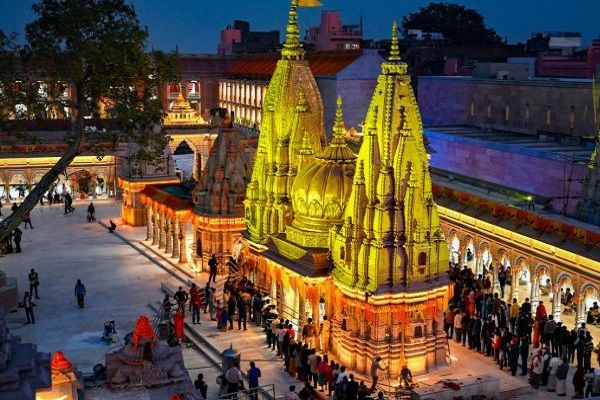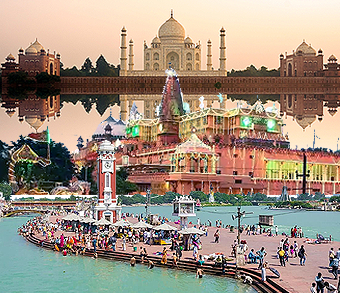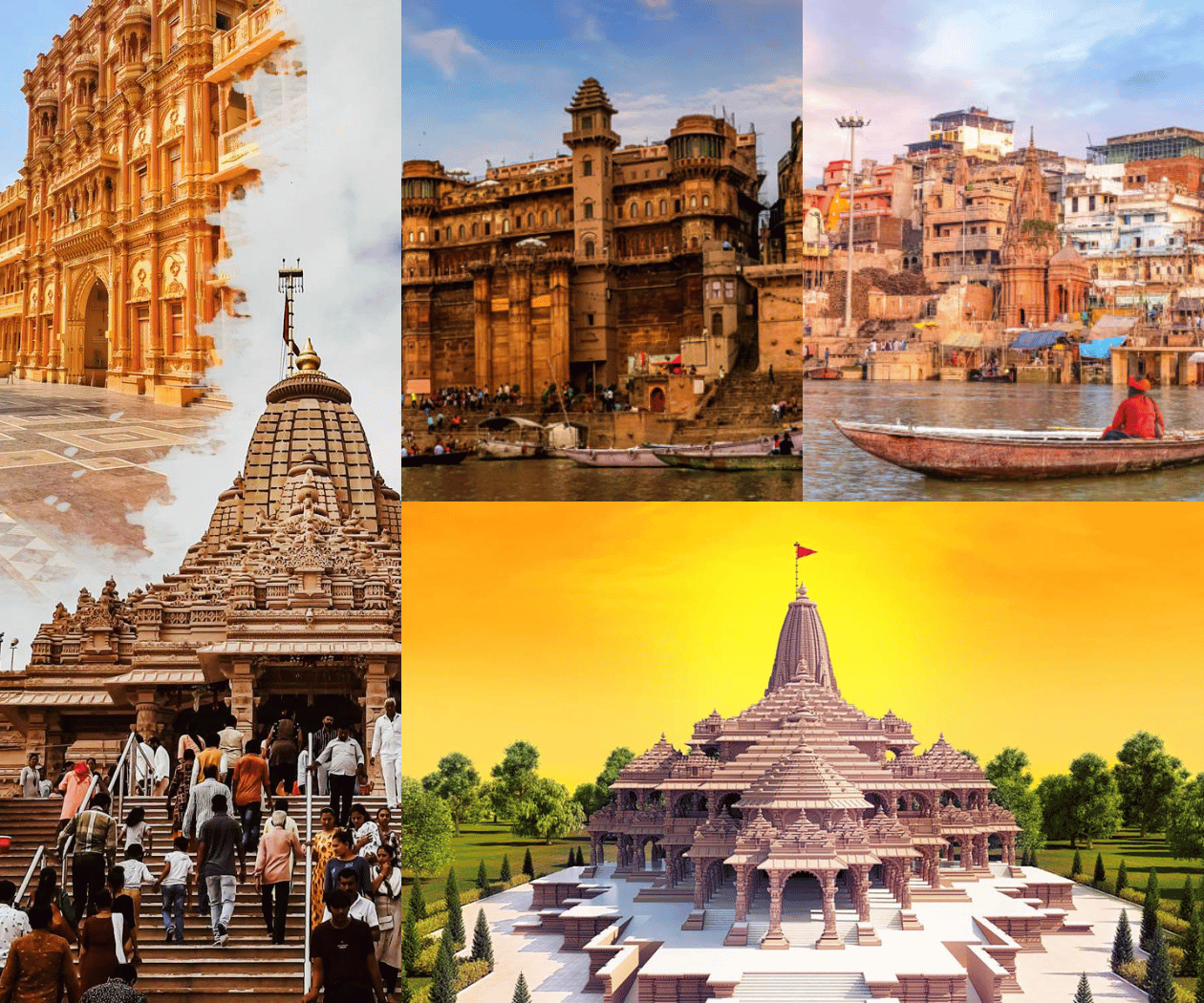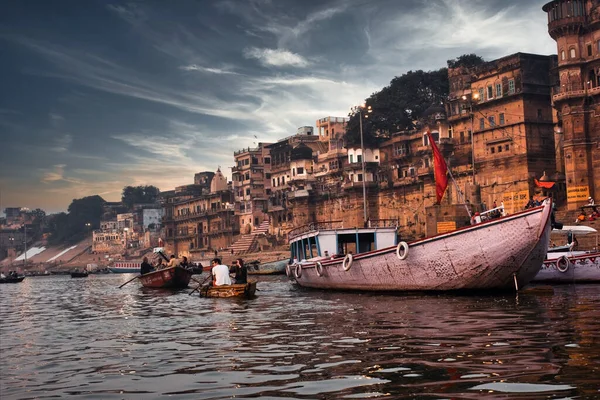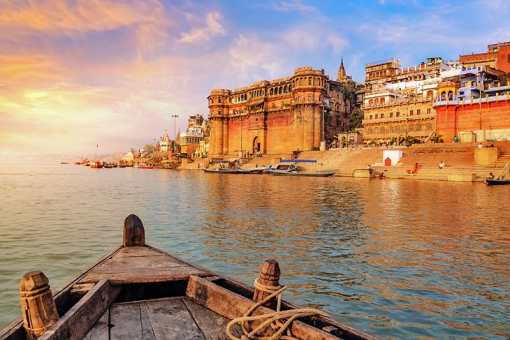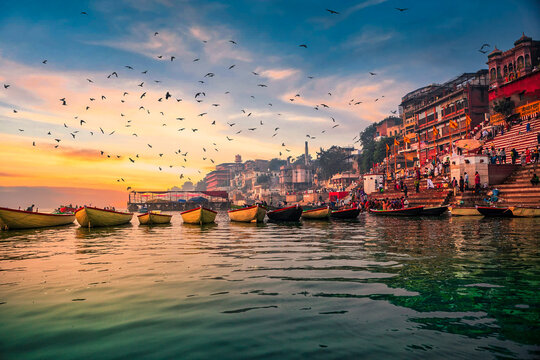Call us for details
8888789880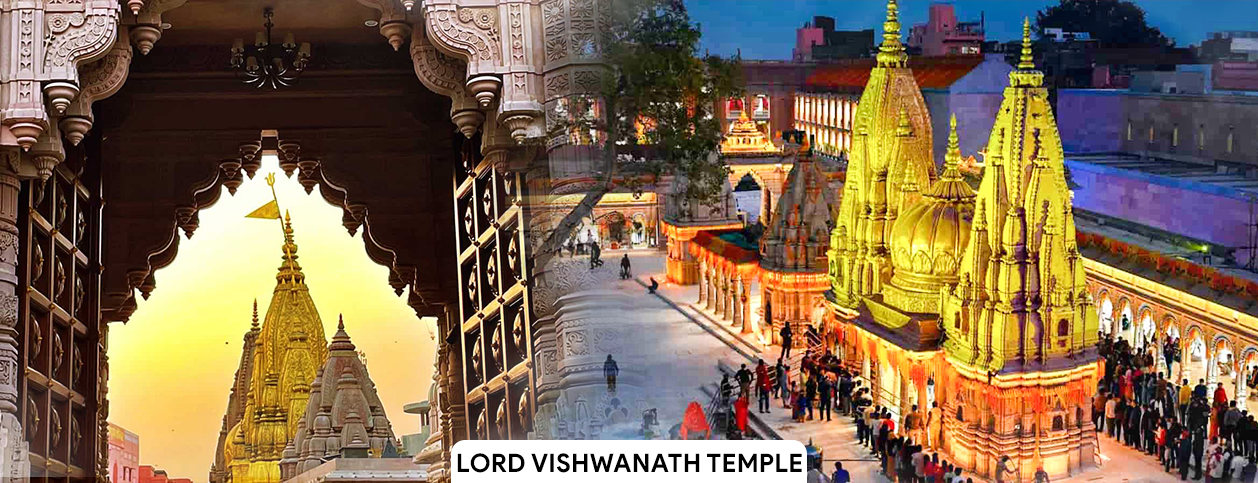
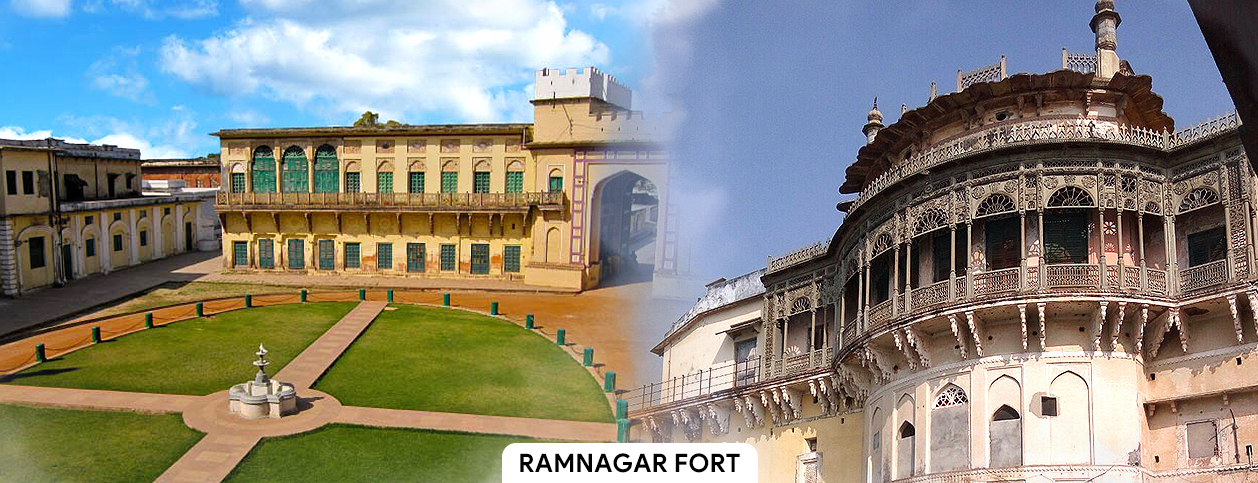
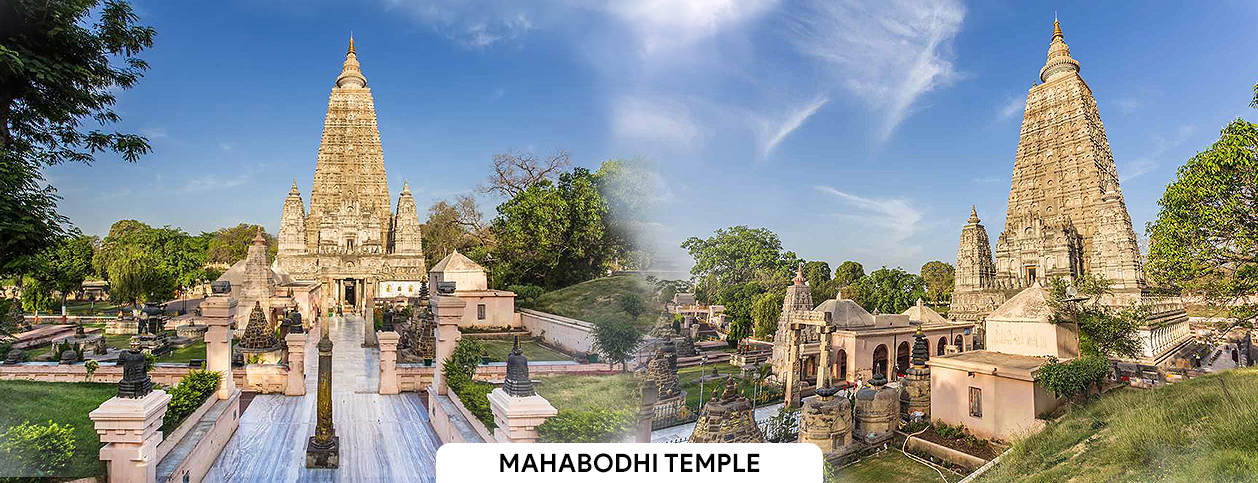

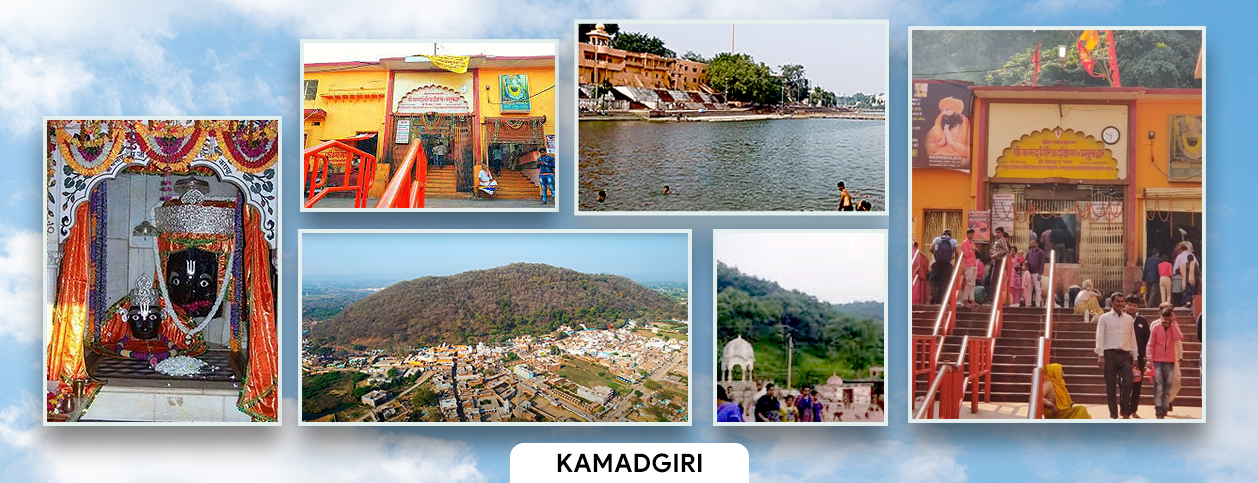
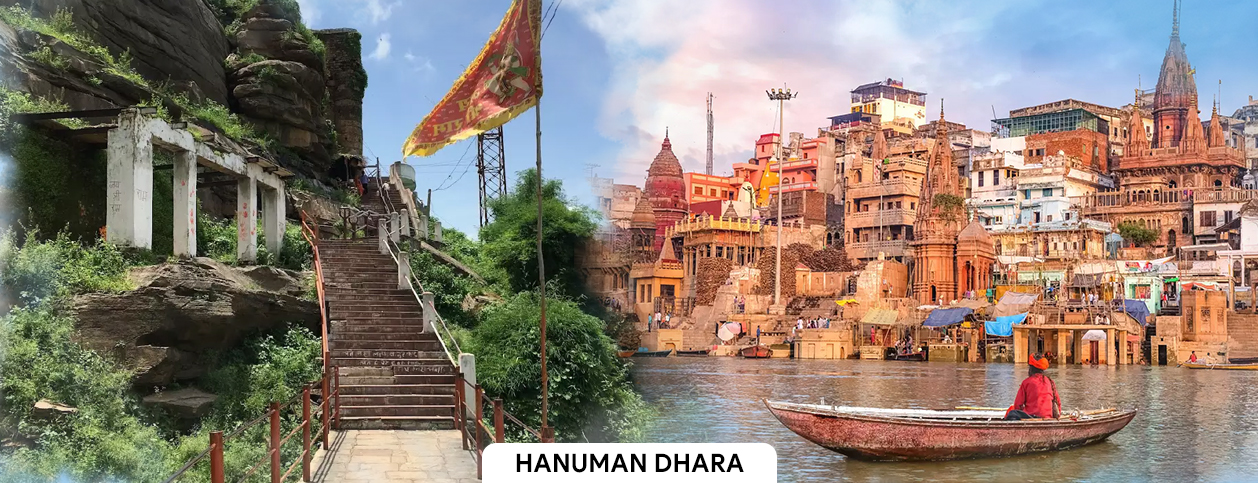
Embark on an immersive 6-night/7-day pilgrimage, delving deep into the spiritual tapestry of India’s heartland. Begin your journey in Varanasi, where the sacred Ganges River weaves a tale of devotion and tradition. Witness the captivating Ganga Aarti and explore ancient temples. Proceed to Prayagraj, the confluence of the Ganges, Yamuna, and Saraswati rivers, offering an ethereal experience. Ayodhya, the birthplace of Lord Rama, beckons with its sacred sites. Chitrakoot enchants with its tranquil surroundings, and Gaya provides an opportunity to pay homage to ancestors and seek enlightenment at the Mahabodhi Temple. This pilgrimage is a profound exploration of India’s spiritual heritage, where each destination unveils a unique facet of devotion, history, and cultural richness. Your journey will leave you spiritually enriched and deeply connected to the essence of India.
🏞️ Highlights:
1. Lord Vishwnath Temple / Annapurna Temple / Vishalakshi Temple.
2. The Kal bhairav Durga Temple, Snakat Mochan Temple.
3. Tulsi manas mandir, Tridev temple.
4. Dhammekh stupa, Sarnath Buddha Temple.
5. Mini zoo, Dharmarajika stupa and Chaukhandi stupa.
6. Maha Bodhi temple, Buddha Statue , Mahabodhi Society & Monastery.
7.Vishnupad temple, Chinese temple, Tibetan temple, Japanes temple and Phalguna River.
8.Anand Bhawan Museum, Swaraj Bhawan, Hanuman Temple, Achchwat Temple, Bharadwaj Ashram.
After Your Arrival At Varanasi Airport/ Railway Station Meet and Great Our Company Representative Was Transferred and Pre-booked for Check-in At Hotel. After Freshening Up & Rest Some Time Then Visit Lord Vishwnath Temple / Annapurna Temple / Vishalakshi Temple Through Narrow Lanes By Walk and Then Proceed to Main Ghat for Ganga Aarti & Boat Ride. Then Evening is Free for Your Own Activity & Shopping. Overnight Stay in Varanasi.
Vishalakshi Devi Shaktipeeth:
Sri Vishalakshidevi Shaktipeeth is the 17th Shaktipeeth of the Ashtadasha Shaktipeeth. Vishalakshi appears in two forms in the sanctum sanctorum. One form is Swayambhuva, the other form is Archamurti. As soon as we enter the temple we have to visit the priest first, then the Swayambhu. Vishalakshi means one with wide eyes. Varanasi is one of the most revered shrines of Goddess Vishalakshi. Kashi is the field of energy that Amma possesses. Kashi Kshetra is located in the state of Uttar Pradesh.
Kashi is also known as Varanasi. Varanasi is the confluence of the rivers Varuna and Asi. Kashi has a special place as one of the Saptamoksha Puranas, an adored shrine for all Indians in Varanasi. The Vishweshwara measured in this field is the chief of the twelve Jyotirlingas. This field is known as the open field.
Lord Vishwanath Temple:
Kashi Vishwanath Temple is a Hindu temple dedicated to Shiva. It is located in Vishwanath Gali, in Varanasi, Uttar Pradesh, India. The temple is a Hindu pilgrimage site and is one of the twelve Jyotirlinga shrines. The presiding deity is known by the names Vishwanath and Vishweshwara (IAST: Viśvanātha and Viśveśvara), literally meaning Lord of the Universe.
According to several historical accounts, the Mughal Emperor Aurangzeb ordered the demolition of the Kashi Vishwanath Temple in 1669.Subsequently, the Gyanvapi Mosque was built on its site in 1678,but Hindu pilgrims continued to visit the remnants of the temple.The current structure was constructed on an adjacent site by the Maratha ruler Ahilyabai Holkar of Indore in 1780.
Annapurna Devi Temple:
Annapurna Devi is one of the most famous Hindu temples (Mandir) in the holy city of Varanasi. This temple has great religious importance in Hinduism and is dedicated to the goddess Annapurna. Annapurna is the Hindu goddess for nourishment and is a form of the goddess Parvati. The current Annapurna Mandir was constructed in the 18th century by Maratha Peshwa Bajirao .Annapurna Devi Mandir was constructed in 1729 AD by Maratha Peshwa Baji Rao.
The temple is constructed in Nagara architecture and has sanctum with large pillared porch, which houses a picture of goddess Annapurna. The temple also houses two icons of the goddess; one made of gold and other of brass. The brass icon is available for daily darshan (viewing & worship). The gold icon can be only seen once a year; on Annakut day.
In Hindu mythology, there are two popular beliefs behind the origin of this temple.According to another belief, once Shiva commented that the entire world (including food) is maya (illusion). Parvati, the goddess of food, got angry and decided to demonstrate the importance of food by making all the food on earth disappear. The world started to suffer due to hunger. Shiva finally came to Parvati and acknowledged the importance of food, begging for food at her door. Parvati became happy, offered food by her own hands to Shiva and then made a kitchen in Varanasi for her devotees.

After take your breakfast & get ready to enjoy city tour of Varanasi covering the Kal bhairav Durga Temple, Snakat Mochan Temple, Tulsi manas mandir, Tridev temple, Ramnagar Fort, New Viswanath Temple B.H.U.Dhammekh stupa, Sarnath Buddha Temple, Mini zoo, Dharmarajika stupa and Chaukhandi stupa which is also named as Seeta Rasoi. After Lunch we will visit Sarnath Museum Etc. Then Back to Varanasi in your hotel room, you can enjoy free time in the evening. Overnight stay in Varanasi.
Ramnagar Fort:
Located on the Eastern banks of River Ganga, opposite to Tulsi Ghat, Ramnagar Fort is a stunning historical monument in Varanasi. It was built by Raja Balwant Singh in 1750 according to the Mughal style of architecture. Even though the system of Kings was abolished in the region, the current Maharaja, Pelu Bhiru Singh, resides in the Fort. It reflects a blend of Mughal and Indian architectural styles, featuring ornate structures and intricate carvings.
The fort encompasses several noteworthy structures, including the Durbar Hall, Saraswati Bhawan, and a museum housing vintage cars, royal costumes, and antique artifacts. The Durbar Hall, adorned with vivid frescoes and a marble balcony, once hosted royal assemblies. The museum offers a glimpse into the opulent lifestyle of the Banaras royalty, displaying artifacts from different eras.
The ChauKhandi Stupa:
The ChauKhandi Stupa was bield in the fifth century. The structure stands atop a rectangular plinth, and is capped by an octagonal Mughal tower that was added more than a thousand years after the stupa was originally built.
Like the other stupas in Sarnath, the Chaukhandi Stupa is thought to house a relic of the Buddha. Its unique octagonal tower is a later addition, commissioned in the late 16th century by Emperor Akbar in memory of his father Humayun. This stupa is located south of the main Sarnath Buddhist Complex.
The stupa that stands today is believed to have evolved from a centuries-old burial mound. The site is said to be where Buddha met the five disciplines who would later follow him to the site of his first sermon, marked by Dhamekh Stupa.
Sarnath Museum:
With its stunning assortment of sculptures, edifices, artefacts and images Sarnath Museum is reckoned to be one of the best places to visit in Sarnath for people of all ages. Situated at a strategic location which is surrounded by luxuriant setting, it is an archaeological museum founded in 1910 which houses a rare collection of the findings that were recovered from the excavation at various archaeological sites of Sarnath. The excavations at these sites were carried out by the Archaeological Survey of India (ASI).
At this popular museum in Sarnath, tourists can expect to see some remarkable collection of Buddhist art, sculpture, and antiquities that together make Sarnath Museum a must-visit place. At present, the museum includes more than 6800 artefacts and sculptures that are centuries old. In total, the museum houses five galleries that display a rich collection of antiquities dating back to 3rd century BCE to 12th century AD. Along with that, there are two verandas that also displays a rare assortment of artefacts and antiquities.

After breakfast, you will be taken on a trip to Bodhgaya. The road trip stretches for 5 to 6 hours to reach Bodhgaya, Once you reach Bodhgaya, you will be escorted to a pre-booked hotel. Top Buddhist spots covered in the sightseeing are Bodhi tree,MahaBodhi temple,Buddha Statue,Mahabodhi Society & Monastery etc.Overnight stay in Bodhgaya.
Mahabodhi Temple:
The Mahabodhi Temple (literally: "Great Awakening Temple") or the Mahābodhi Mahāvihāra, a UNESCO World Heritage Site, is an ancient, but restored Buddhist temple in Bodh Gaya, Bihar, India, marking the location where the Buddha is said to have attained enlightenment. Bodh Gaya is 15 km from Gaya and is about 96 km (60 mi) from Patna. The site contains a descendant of the Bodhi Tree under which the Buddha gained enlightenment, and has been a major pilgrimage destination of Buddhists for over two thousand years.
Many of the oldest sculptural elements have been moved to the museum beside the temple, and some, such as the carved stone railing wall around the main structure, have been replaced by replicas. The main temple's survival is especially impressive, as it was mostly made of brick covered with stucco, materials that are much less durable than stone. However, it is understood that very little of the original sculptural decoration has survived.
The Great Buddha statue:
The Great Buddha statue (Daibutsu) is one of the popular stops on the Buddhist pilgrimage and tourist routes in Bodh Gaya, Bihar (India). The statue is 18.5 m (61 ft)high representing the Buddha seated in a meditation pose, or dhyana mudra, on a lotus in the open air.The total height of the construction is 80 ft (24 m) of which the Buddha makes up 64 ft (20 m), the lotus on which the Buddha sits 5 ft (1.5 m) and the lower pedestal 10 ft (3.0 m). The construction's width is nearly 60 ft (18 m) at its maximum. The statue was designed by V. Ganapati Sthapatiand took seven years to complete using the labor of 12,000 stonemasons. It is constructed from a combination of sandstone and red granite blocks.
A hollow spiral staircase inside the statue leads from the ground up to the chest. Shelves on the interior walls display 16,300 small bronze images of the Buddha.The Great Buddha statue is located in a garden at the end of Temple Street and is surrounded by smaller sculptures of Buddha's ten principal disciples, five on each side.The Great Buddha was possibly the largest Buddha statue in India at the time and was consecrated on 18 November 1989 by the 14th Dalai Lama.The foundation stone for the statue was laid in 1982.
The Mahabodhi Society Temple:
The Mahabodhi Society Temple at Sarnath is one of the most ancient temples in India, built in the Gupta period entirely out of bricks. It is the proselyte where Lord Buddha attained enlightenment. When a Buddhist monk, Dharmapala from Sri Lanka encountered the dilapidated condition of Sarnath, he campaigned to collect global funds from Buddhist countries and revive the temple. Finally, a temple was built next to the archaeological site, which was a replica of the original shrine in the site.
With donations from royal kings and worldwide governments,he erected the temple we see today close to the original site.Japanese artists wre hired to paint the walls and frescoes st this stunning place of worship.Dharmapala also collected some ashes of Buddha,preseeved in myanmar, and stored it at Mahabodhi Society temple.Propagated from Gaya to Sri Lanka and back to Sarnath,the Mahabodhi tree at this temple is revered as a relic of Budhha himself.

After breakfast, you will be taken on a trip to Gaya which 12 km away from Bodhgaya. Before this, we will go to see the tourist destinations of Bodh Gaya. Gaya is famous for the presence of Lord Vishnu’s footprint. Today, the footprint can be seen in Vishnupad temple. The sightseeing tour covers Vishnu temple, Vishnupad temple, Chinese temple, Tibetan temple, Japanes temple and Phalguna River. You will be taken back to Varanasi on road. It takes 5 to 6 hours to reach Varanasi. Once your reach Varanasi, you will be checked into a hotel. Overnight stay in Varanasi.
The Japanese Temple:
The Japanese Temple is accessed from near the main market in Sarnath, and is just behind the government-run tourist bungalow. This Japanese temple has typically Japanese aesthetics, with a double storey pagoda with a sloping roof curving up at the eaves that gives it a very calm feel. A placard outside the shrine suggests that it is run by Dharmachakra Indo-Japan Buddhist Cultural Society.
The original name of the Japanese temple is Nichigai Suzan Horinji Temple but it is commonly referred to as 'Japanese Temple' by local guides and tourists. The pleasing architecture of the temple is reminiscent of the world renowned Japanese temples in Kyoto, Japan. Before the main temple, on the right side, there is a statue of the Buddha in a calm pose beneath a tree. On the left side there is a pillar with Japanese inscriptions.
Gaya:
Gaya is the second largest city of Bihar, India, and it is also headquarter of Gaya District. Gaya is situated 100 km south of Patna, the capital city of Bihar. This ancient city grew on the banks of Phalgu River (Niranjana, as mentioned in Ramayana). This place is considered holy among the Hindus, the Buddhists and the Jains. It is surrounded by small rocky hills (Mangla-Gauri, Shringa-Sthan, Ram-Shila and Brahmayoni) by three sides and the river flowing on the fourth (eastern) side. Gaya derives its name from the mythological demon Gayasur (which literally means Gaya the demon).
The Phalgu River:
The Phalgu is formed by the confluence, some 3 kilometres (2 mi) below Bodh Gaya, of the Lilajan (also called Niranjan or Nilanjan) and the Mohana, two large hill streams each of which is over 270 metres (300 yd) wide. The Phalgu is also mentioned as Niranjan. The united stream flows on to the north past the town of Gaya, where it attains a breadth of over 820 metres (900 yd). The Phalgu here passes by a high rocky bank, on the steep sides of which are many paved stairs leading down to the river bed, while high above are the Vishnupad Mandir, with many minor shrines around it. It then runs in a north-easterly direction for about 27 kilometres (17 mi), and opposite the Barabar hills it again takes the name of Mohana, and divides into two branches which eventually flow into a branch of the Punpun.
The Phalgu like its confluent streams, Lilajan and Mohana, is subject to high floods during the monsoons but in other seasons of the year it dwindles to a stream wandering through a wide expanse of sand.

Early Morning drive to Chitrakoot.Chitrakoot for full day temple tour which includes Ram Ghat,Kamadgiri temple,Sita Rasoi And Janki Kund.Then back to Allahabad.Overnight stay In Allahabad.
Kamadgiri:
Kamadgiri is a forested hill with the base surrounded by multiple Hindu temples on all sides and is considered to be the heart of Chitrakoot. The pilgrims perform Parikrama around this hill with the belief that all their sorrows will be ended and their wishes will come true by doing so.
The name of Kamadgiri is derived from Kamadnathji, another name of Lord Rama and it meant fulfiller of all wishes. There are several temples on the 5 kilometres path of the Parikrama, one of the most famous being Bharat Milaap temple, where Bharat met Lord Ram and convinced him to come back to his kingdom.
Some part of Kamadgiri Mountain falls in Uttar Pradesh, while some in Madhya Pradesh. Kamadgiri sees a throng of devotees during the Chaitra month (first month of the Hindu calendar) to revel in the festivities of Ram Navami and Deepavali. A grand fair is also held here every month on Amavasya (full moon day).
Janki Kund:
Janki Kund in Chitrakoot is a sacred Kund with deep-rooted significance in Hindu mythology. Named after Goddess Sita, also known as Janki, it is believed to be the place where she bathed during her stay in Chitrakoot. Pilgrims consider the waters of Janki Kund to be spiritually purifying and often take a dip to seek blessings.
The serene surroundings and the mythological association with Sita's presence make Janki Kund a revered pilgrimage site, attracting devotees who come to experience the divine tranquility and connect with the legendary tales of the Ramayana in the heart of Chitrakoot.
Ramghat:
Ramghat is one of the most popular tourist attractions in Chitrakoot. The serene ghat lining the Mandakini River is where Lord Ram, Sita and Lakshman appeared in front of the famous poet Tulsidas and he used to sit on the riverside and write Ram Charitra Manas.
Ramghat is the centre of all religious activities in Chitrakoot and the most popular bathing ghat. It is believed that taking a dip at Ramghat would absolve a person of all sins. The fragrance of incense sticks and the hymn of holy chants by the saints in saffron clothes at Ramghat makes the soul calm and touched. You can go for boating in the river and enjoy the beauty of this place until the evening and attend the arti with beautiful diya lightings, sounds of bell and holy chants.

After breakfast, check out the hotel and transfer to Ayodhya. Traveling through the yatra of Allahabad city tourism is the first place in Allahabad, Triveni Sangam enjoys three rivers, Ganga, Yamuna and Saraswati. It is a holy place and you can see many rituals happening at this place. Later, you will be taken to Anand Bhawan Museum, Swaraj Bhawan, Hanuman Temple, Achchwat Temple,Bharadwaj Ashram, and then lunch will be done and Ayodhya will be left for departure.
Arrive at the hotel and at night for relaxation at check-in.Overnight stay in Ayodhya.
Anand Bhawan Museum:
Anand Bhawan is the former residence of Nehru family which has now been transformed into a museum showcasing various artefacts and articles of the era of Independence movement in India. The double-storey mansion was personally designed by Motilal Nehru.
When the prior residence of Nehru's family Swaraj Bhavan started to be used as an office of Indian National Congress, a new Nehru residence was designed by Motilal Nehru, a notable independence movement leader, and politician. The house is beautifully adorned with the wooden furniture imported from China and Europe and various artefacts from all around the world.
Anand Bhawan has an important historic value not only because of its construction but also for the major role that it has played in the history of India. It was visited by many famous freedom fighters to develop the conspiracies to drive Britishers out of the country. In 1970, Anand Bhavan was donated to the Indian government by Indira Gandhi, to convert it into a mational museum to keep intact the legacy of Nehru family.
Hanuman Dhara:
There is a stream of water falling upon the deity of Lord Hanuman releasing in a kund and there are langoors in this area.
Hanuman Dhara is the name of the spring which sprouted from a rock when Lord Ram shot an arrow into it to calm down an enraged Hanuman when he came to this place to extinguish the fire that was caught in his tail after he returned from burning Lanka.
Bharadwaj Ashram:
At present it is located in Colonelganj locality. A shivling of Bhardwajeshwar Mahadev was established here by the sage Bhardwaj, and in addition there are hundreds of statues. Important among them are: Ram Lakshman, Mahishasur Mardini, Surya, Sheehan, Nar varah. Maharishi Bhardwaj was the first patron of Ayurveda. Lord Rama had gone to the sage Bhardwaj’s ashram to get his blessings. It is a matter of research to find where the ashram existed then, but at present it is near the Anand Bhawan.
There is a Shiv temple as also statues of Bhardwaj, Yagyavalkya and other sages, gods and goddesses. Bhardwaj was a disciple of Valmiki. Earlier a huge temple used to stand here that was razed, and there was a Bharatkund atop a mountain, that has been filled with garbage now.

After Breakfast, Check Out from Your Room, We Will Go Ahead for Varanasi. But Before that Ayodhya Will Go all the Day to the Sights of the City of Ayodhya, such as Ram Janam, Come to the Land and Take a Bath in the Holy Sarai River. Later Hanuman Garhi, Kanak Bhawan, Tulsi Memorial Building, Sita's Kitchen Tours Remains of Hinduism, Buddhism, Jainism and Islam Can Still Be Found in Ayodhya. According to the Jain Belief, Tirthankar Adinath (rishabhdev) Was Born in Ayodhya, Including the First Tirthankar.
after This, We Will Go Departure to Varanasi After Lunch. Then Time to Catch Your Flight / Train for Your Onward Journey with Memories of Perfect Reisen Holidays.
The Kanak Bhawan :
The Kanak Bhawan is established towards the northeastern corner of the Ram Janmabhoomi in Tulsi Nagar. Constructed in 1891, this temple is also known as Sone-ka-Ghar. It is a holy site dedicated to the Hindu deity Lord Rama and his wife, Goddess Sita.
Kanak Bhawan, also meaning Golden Palace, cites three golden-crowned idols of the two gods under a silver roof in the sanctum santorum (Garbagriha). It is believed that this shrine was gifted to Rama and Sita by the former's stepmother, Kaikeyi.
Upon designed renovation during Vikramaditya's reign, the present site was further entirely revamped by Vrish Bhanu Kunwari. This Bundela-styled temple is currently managed by the Sri Vrishbhan Dharma Setu Trust Private Limited.
| Hotel Type | Hotel Name |
|---|---|
| DELUXE | Hotel Millennium Inn,Prayagraj/Similars |
| PREMIUM | Hotel Kanha Shyam/Similars |
| STANDARD | Hotel Cosmopolitan Rooms & Banquet/Similars |
| SUPER DELUXE | Hotel Yatrik /Similars |
| Hotel Type | Hotel Name |
|---|---|
| DELUXE | Royal Heritage Hotel & Resort/Similars |
| PREMIUM | Park Inn By Radisson Ayodhya/Similars |
| STANDARD | FabHotel Trayamb/Similars |
| SUPER DELUXE | Hotel Krinsocco/Similars |
| Hotel Type | Hotel Name |
|---|---|
| DELUXE | Hyatt Place Bodhgaya/Similars |
| PREMIUM | Mariya Condo Hotel/Similars |
| STANDARD | Sambodhi Retreat/Similars |
| SUPER DELUXE | Buddha Heritage Resort/Similars |
| Hotel Type | Hotel Name |
|---|---|
| DELUXE | Hotel Varanasi Inn/Similars |
| PREMIUM | Ramada Plaza by Wyndham JHV, Varanasi/Similars |
| STANDARD | Trimrooms Buddha Varanasi/Simlars |
| SUPER DELUXE | Hotel surya,Kaiser Palace/Similars |
| SUPERIOR | Hotel surya,Kaiser Palace/Similars |
| Source | Destination | VehicleName | Price | VehicleType | Remarks | Units |
|---|---|---|---|---|---|---|
| Varanasi | Varanasi | SUV | 0 | SUV | - | 1 |
Do not hesitage to give us a call. We are an expert team and we are happy to talk to you.
